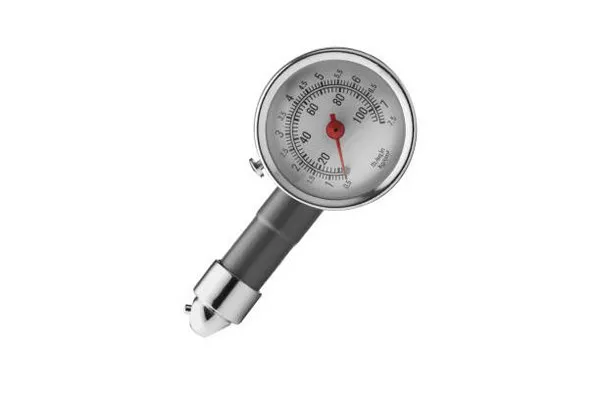Vacuum pressure gauges play a crucial role in industrial applications, scientific research, and manufacturing processes. Understanding the unit of measurement for vacuum pressure is essential for ensuring accuracy and efficiency in vacuum-related operations. This article explores the units of vacuum pressure, their significance, and their practical applications.
Understanding Vacuum Pressure
What is Vacuum Pressure?
Vacuum pressure refers to pressure lower than the atmospheric pressure of 101.325 kPa (kilopascals) at sea level. It is the pressure measured in a system where air or gas is partially removed, creating a vacuum. Unlike absolute pressure, which is measured relative to a perfect vacuum (zero pressure), vacuum pressure is often measured relative to atmospheric pressure.
Types of Vacuum Measurements
There are different ways to measure vacuum pressure, leading to various units of measurement. The two primary pressure references used in vacuum measurements are:
Absolute Pressure (P_abs): Measured relative to a perfect vacuum (zero pressure).
Gauge Pressure (P_gauge): Measured relative to atmospheric pressure.
When measuring vacuum pressure, negative gauge pressure values indicate pressures lower than atmospheric pressure.
Common Units of Vacuum Pressure
Different units are used worldwide to measure vacuum pressure, depending on the industry and region. The most commonly used units include:
1. Pascal (Pa)
The pascal (Pa) is the SI unit of pressure, defined as one newton per square meter (N/m²). It is commonly used in scientific and industrial applications. When measuring vacuum, values are often represented in kilopascals (kPa) or even micropascals (µPa) for ultra-high vacuum measurements.
- 1 Pa = 1 N/m²
- 1 kPa = 1,000 Pa
- 1 MPa = 1,000,000 Pa
In vacuum applications, pressures lower than atmospheric pressure are expressed as a negative value when using gauge pressure.
2. Torr and Millitorr
The Torr is a non-SI unit of pressure commonly used in vacuum science. It is based on the standard atmospheric pressure of 760 mmHg (millimeters of mercury).
- 1 Torr = 1/760 of atmospheric pressure
- 1 Torr ≈ 133.322 Pa
- 1 millitorr (mTorr) = 0.001 Torr
Torr is widely used in semiconductor manufacturing and laboratory applications.
3. Millimeters of Mercury (mmHg)
The mmHg unit is similar to the Torr and is derived from the height of a mercury column under vacuum conditions.
- 1 mmHg ≈ 133.322 Pa
- 1 atm = 760 mmHg
It is primarily used in medical applications, such as blood pressure measurement, and some vacuum applications.
4. Inches of Mercury (inHg)
The inHg unit is commonly used in industrial vacuum systems, particularly in the United States. It measures pressure in inches of mercury (Hg), referenced against atmospheric pressure.
- 1 inHg = 3,386.39 Pa
- 1 atm = 29.92 inHg
It is often used in HVAC systems, automotive applications, and industrial vacuum chambers.
5. Atmospheres (atm)
The atmosphere (atm) is a unit that represents standard atmospheric pressure at sea level.
- 1 atm = 101.325 kPa
- 1 atm = 760 Torr
While not commonly used for precise vacuum measurements, it provides a general reference.
6. Bar and Millibar (mbar)
The bar is a metric unit often used in European industries and meteorology.
- 1 bar = 100,000 Pa = 100 kPa
- 1 millibar (mbar) = 0.001 bar = 100 Pa
Millibars are often used in meteorology and low-vacuum applications.
7. Micron (µm)
A micron or micrometer of mercury (µm Hg) is a unit used in high-vacuum applications.
- 1 µm = 1/1000 of 1 mmHg
- 1 µm ≈ 0.133322 Pa
This unit is essential in ultra-high vacuum systems used in space simulation and advanced material research.
Choosing the Right Unit for Vacuum Measurement
Selecting the appropriate vacuum unit depends on factors such as:
Industry Standards: Different industries adopt specific units (e.g., semiconductor industry prefers Torr, while automotive applications use inHg).
Measurement Range: High vacuum applications use microns or millitorr, while rough vacuum measurements use inHg or mbar.
Geographical Region: SI units like Pascals are preferred in Europe, whereas inches of mercury are common in North America.
Applications of Vacuum Pressure Measurement
Semiconductor Industry: Uses Torr and millitorr for high-precision processes.
Automotive Industry: Uses inches of mercury (inHg) for engine vacuum diagnostics.
Medical Applications: Uses mmHg for blood pressure monitoring and vacuum-assisted procedures.
HVAC Systems: Uses inHg for vacuum pumps and refrigeration systems.
Scientific Research: Uses microns and Pascal for ultra-high vacuum experiments.
Industrial Vacuum Systems: Uses bar, mbar, and kPa for process control.
Conclusion
Understanding the units of vacuum pressure gauges is essential for selecting the right measurement system for a given application. The choice of units depends on industry requirements, measurement accuracy, and geographical preferences. Whether using Pascals, Torr, inches of mercury, or microns, accurate vacuum measurement ensures optimal performance in scientific, industrial, and commercial applications.

